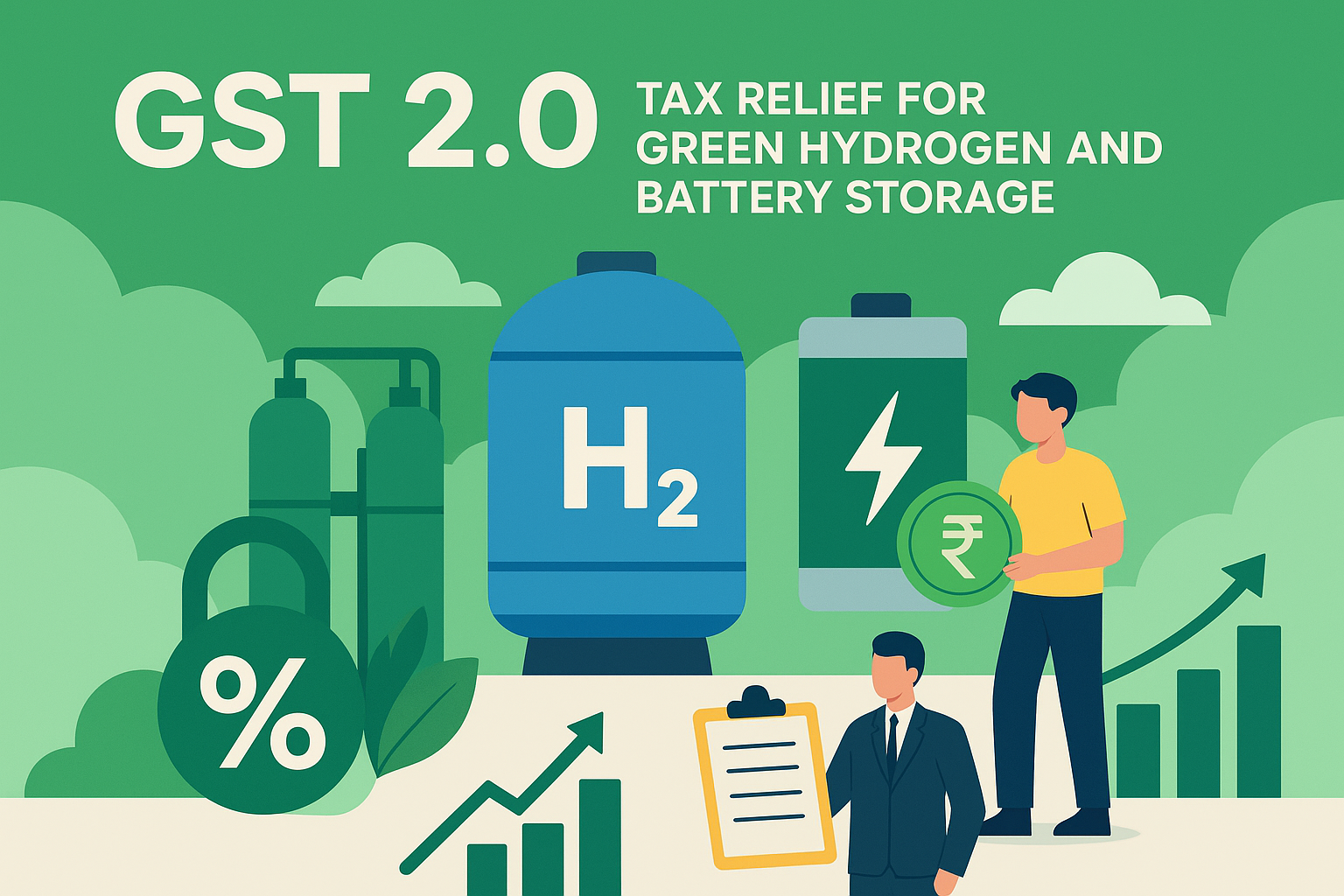GST 2.0: Tax Relief for Green Hydrogen and Battery Storage
Renewable Energy Power SalesPosted by admin on 2025-10-17 12:34:04 |
Share: Facebook | Twitter | Whatsapp | Linkedin Visits: 46

India’s GST Council is moving towards major reforms under GST 2.0, with proposals to cut tax rates on green hydrogen, electrolysers, and battery storage systems. The initiative is expected to give a strong push to India’s clean energy transition and reduce project costs across the sector.
Lower Tax Rates ProposedAt present, green hydrogen and electrolysers are taxed at 18%, while battery storage systems face 18 to 28%. The new proposal aims to bring these down to a uniform 5%, encouraging large-scale adoption of sustainable technologies. Such rate cuts could significantly lower capital expenditure for renewable developers and boost investments in green hydrogen and energy storage.
Industry ResponseThe India Energy Storage Alliance (IESA) has welcomed the move, calling it a step toward making India globally competitive in clean energy manufacturing. Analysts estimate the reforms could save investors Rs 1 to1.5 lakh crore by 2030, strengthening the economics of renewable projects including solar, wind, and hydrogen-based solutions.
Fiscal Balancing MeasuresTo offset potential revenue losses, the Council is reportedly considering raising the GST on coal from 5% to 18%, signaling a stronger policy shift away from fossil fuels. This aligns with India’s long-term target of achieving net-zero emissions by 2070.
Next Steps and ImpactImplementation details, such as treatment of existing inventories and service classifications for EV charging and battery swapping, are still under discussion.
GST 2.0: Advantages for eClouds Solar Developers and Power BuyersUnder GST 2.0, our eClouds customers who are contemplating for new solar power plant will benefit from reduced tax rates on renewable components, lowering overall project costs. Consequently, consumers drawing power from these generators will enjoy more competitive and affordable tariffs, as the cost advantages are passed down. This reform strengthens eClouds’ renewable initiatives and enhances the overall affordability of clean energy in the market.
Search
Categories
Recent News
- Reduction of Cross Subsidies in Karnataka's Electricity Sector
- Economic Benefits of Solar Power Projects
- Karnataka Open Access Rules and Regulations
- eclouds
- Small Hydel Policy 2024
- India’s Renewable Energy Milestones: 2024
- eClouds Eyarthi's AMC on Solar Projects
- Reduction of Cross Subsidies in Karnataka's Electricity Sector





